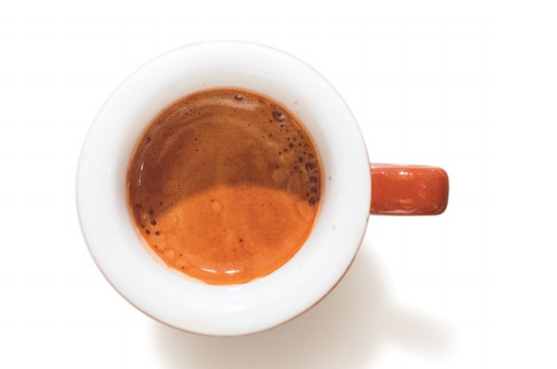- Place fresh coffee grounds into the portafilter basket until full or overflowing.
- Knock the handle on the tamping mat once to settle the grounds.
- Evenly distribute the grounds to a level flush with the rim of the filter basket. Release any excess grounds back into the doser hopper.
- Compress the grounds with a tamper, pressing firmly, then twist the tamper to smooth the surface of the grounds. Tamp pressure should be around 30kg so the applied pressure should be very firm.
- Rocket Espresso filter baskets have a reference line inside them, that the grounds, once tamped, should be level with.
- Insert the portafilter into the group head and activate the pump immediately by lifting the brew lever.
- Observe the flow.
- Liquid volume should be 50-60ml in 20-30 seconds (from the double handle or 25-30ml in 25-30 seconds if using the single basket. Stop the pump appropriately.
- Serve immediately or combine with milk to prepare an espresso based beverage.
- Remove portafilter and knock out spent coffee.
- Wipe filter basket clean and flush group head.
- Return portafilter to group head to keep portafilter heated.

FLOW RATE & GRIND SETTING
- Ensure that your dosing and tamping is consistent.
- Good extraction is characterised by a 5–10 second delay before any coffee will pour. Heavy droplets will appear and develop into a thick, straight and even pour. The colour will be dark brown or hazelnut, preferably with a reddish reflection (see page 33).
- The pour should be cut off before the colour lightens and the pour begins to curl in. • If the flow is too fast (another sign is a pale crema and white streaks) then adjust your grind to make it finer.
- The finer the grind the slower the extraction. The coarser the grind the faster the extraction.
- If the flow rate is too slow, adjust your grind setting to make it coarser.
- Correct grind equals correct extraction equals correct flavour.



Share:
HOW TO TEXTURE MILK